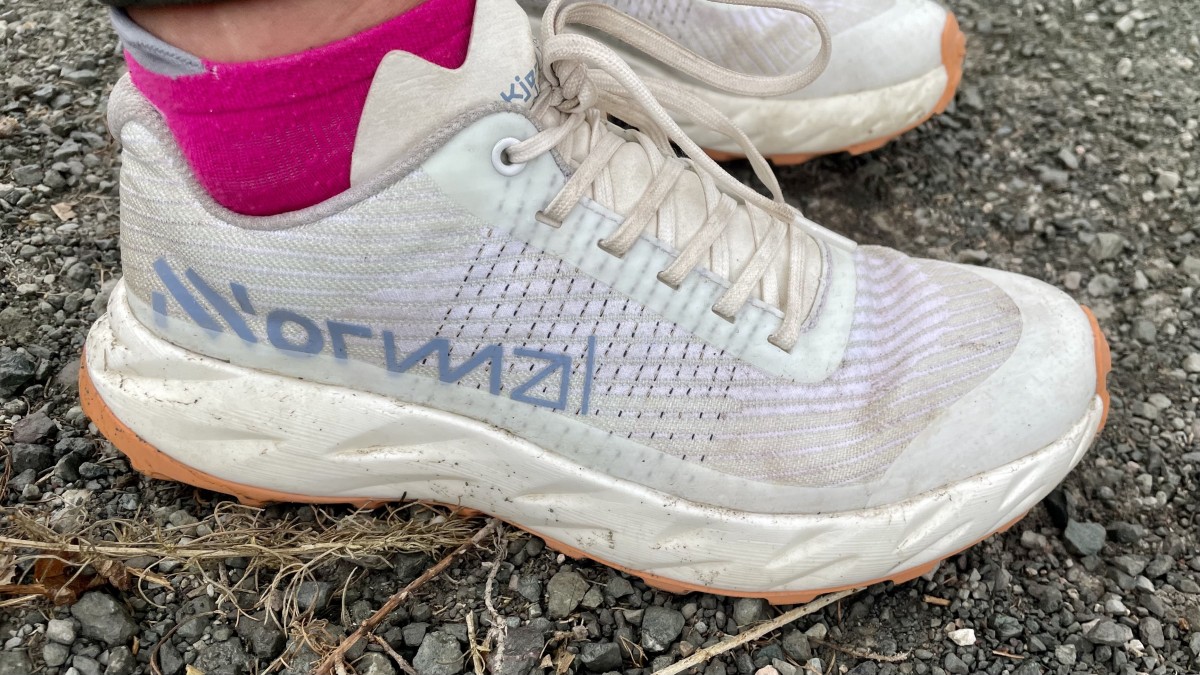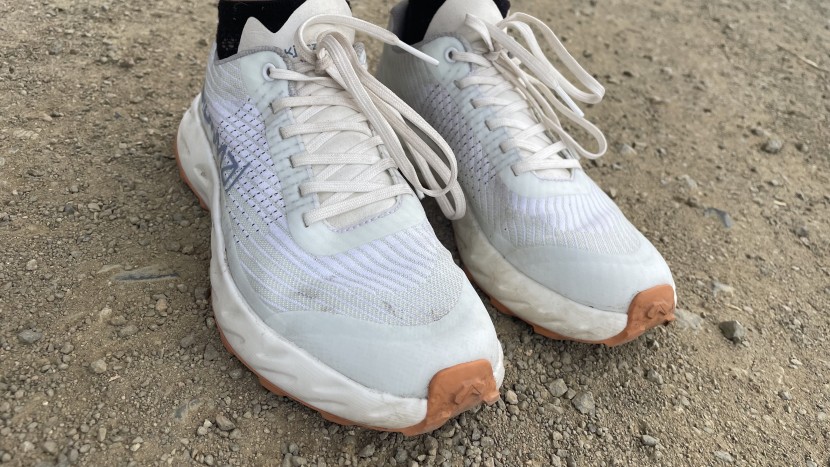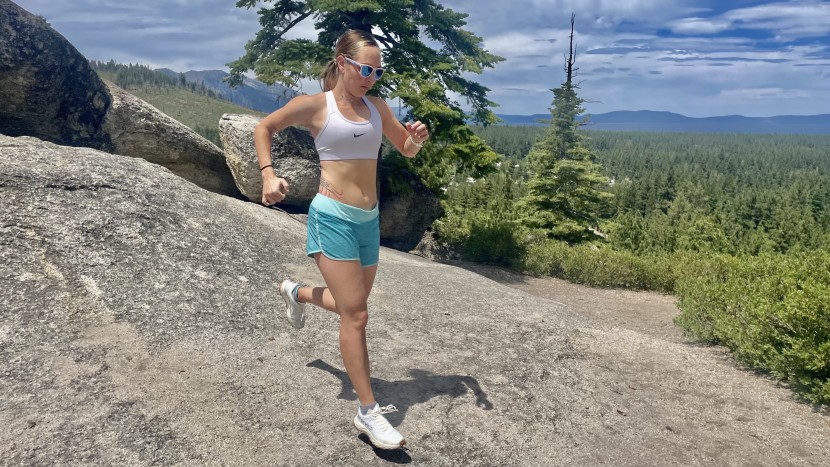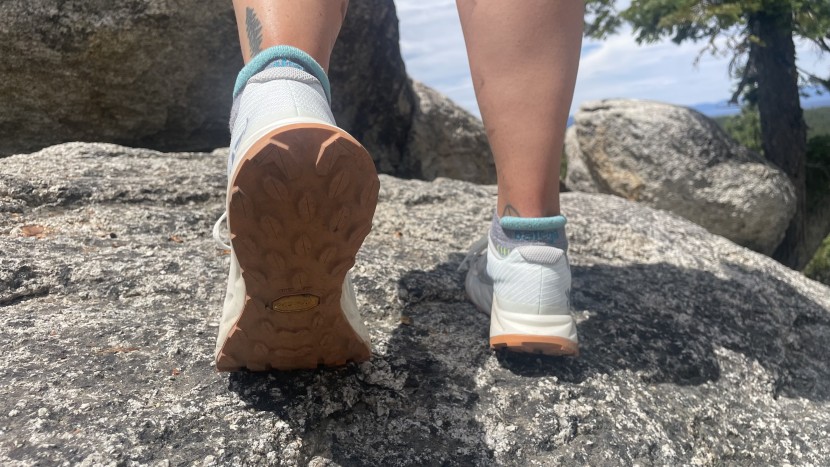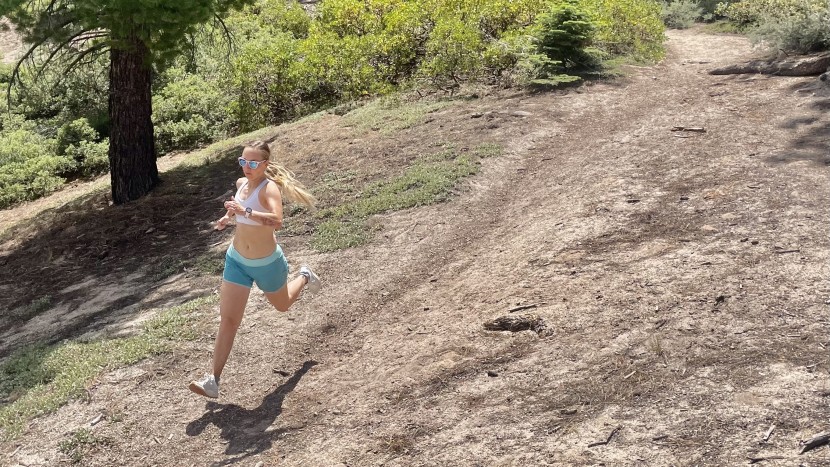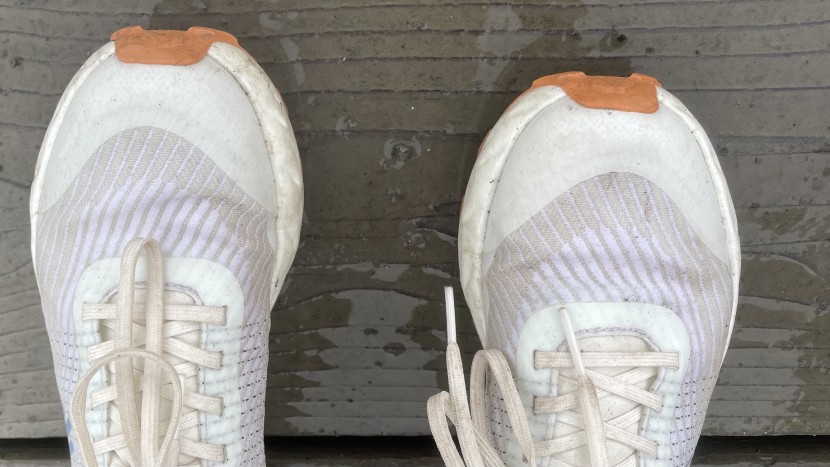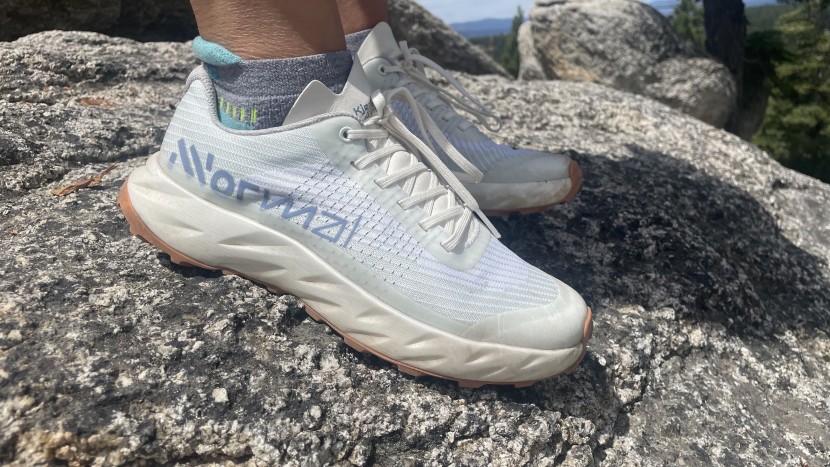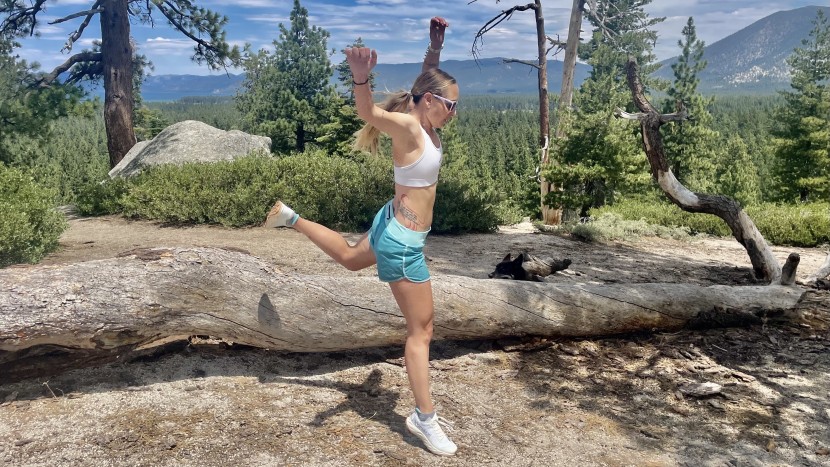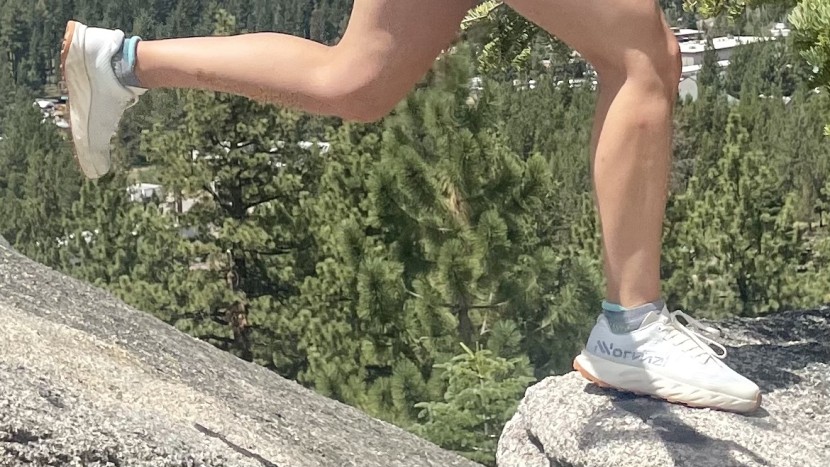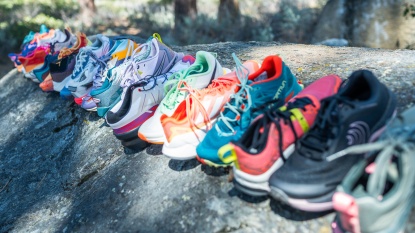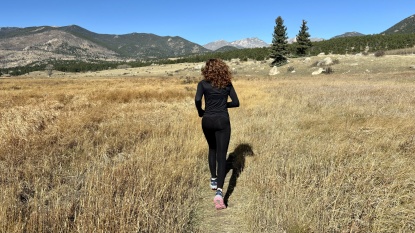Nnormal Kjerag - Women's Review

Our Verdict
Our Analysis and Test Results
This is a unisex shoe, and each shoe in women's US size 6.5 (men's 5.5) weighs in at just 6.61 ounces, making the Nnormal Kjerag one of the lightest weight trail running shoes available today. With a measured heel-to-toe drop of 8mm (Nnormal claims 6 mm, but our standardized measurements showed slightly more than that) and a 24 mm measured heel stack height, this is the shoe for weight-conscious trail fiends who want to add some pep to their step.
Comfort and Fit
From the moment I slipped the Nnormal Kjerag onto my feet, I knew I was in for a comfortable ride. I immediately noticed that it runs a bit long in the toe box, perhaps because it is a unisex shoe. I grew to appreciate the slight bit of extra length because it prevented me from pounding my toenails into the toe cap during descents. Many trail runners actually purchase all their shoes a half size larger than they typically wear to avoid bruising their toenails on downhills.
The textiles and weave of the upper combine beautifully with a simple interior to make a shoe that never felt too rigid or gave me hotspots, even in the initial phases of our testing. This is one of the more flexible trail shoes we've tested, giving it a profile more akin to a responsive road shoe, a comfort feature I adore. This style may not appeal to you if you want a sturdier shoe that is more reminiscent of a hiking boot.
The Kjerag does run fairly narrow, and as of now, there is no wide option available. The upper has a way of conforming to your foot shape for added comfort, but wide-footed runners might find that the platform isn't wide enough. The toe box is comfortably spacious, offering room for toes to flex and splay without overdoing it. Width notwithstanding, as the shoe breaks in, you might feel a slight crease in the toebox; I could feel this at the bases of my big toes. I wasn't ever bothered by this, but if you like the roof of your toe box to be a bit more ample, it is worth keeping this quirk in mind. Ultimately, I loved the comfort and fit of the Kjerag, but I acknowledge that it isn't what all trail runners might want. If you want a long-distance workhorse with plentiful cushion and some extra oomph to get the job done, we have better recommendations for you. If you want to add a comfortable and nimble shoe to your existing running kit, the Kjerag is worth considering.
Traction
The outsole of the Kjerag is adorned with a Vibram Litebase Megagrip rubber, which is a fairly common textile in the world of trail shoes. This means that the traction is above average, though the lugs are slightly shorter than some of our spikier contenders.
We measured the lugs on the Kjerag at 3 mm, which is plenty bitey for tackling your average trails. The lugs are shaped and patterned with grippy corners facing in all directions.
The flexibility of the outsole, the grip and bite of the lugs, and the overall profile of the Kjerag are great when you want a peppy trail run with plenty of directional changes. While not the shoe I would use for sloppy, muddy running, the traction of the Kjerag holds its own and helps secure its standing as a strong trail running shoe.
Stability
With a measured drop of 8 mm (Nnormal claims 6 mm) and relatively low profile, the Kjerag offers above-average stability. While other shoes, such as those with wider outsoles, can provide a bit more basic stability, the Kjerag holds its own in this metric.
For flying around hairpin turns on speedy, technical descents, this is a shoe you want in your corner. Its narrower-than-average midfoot hugs your foot shape, allowing you to be in total control. The weave of the Kevlar-coated yarn provides lateral stability without being overbearing. The specific weave of the textiles and laminated strength around the eyelets secures the lateral edges of the shoe so that you never have to worry about it getting floppy as you run. Even after punishing this shoe with gritty miles, muddy trails, and plenty of water tests, the conforms-to-you upper still provided a snug fit.
The Kjerag doesn't have any additional lateral supports, so bear this in mind if you want a shoe to aid in fatigue-induced overpronation. We wouldn't recommend this for runners seeking out shoes to aid in stability, especially laterally, but if you want something trustworthy with a beautiful combination of pep and stability, it's a fantastic option.
Foot Protection
As mentioned, the Kjerag demonstrates a minimal approach, and nowhere is it more obvious than in this metric. Yet somehow, the Kjerag also isn't the least protective trail running shoe in our roundup.
Its toecap isn't super rugged but is more rigid than expected. The lamination of the toe cap extends back a bit and wraps around the shoe for added protection from water and debris. The Kevlar-coated yarn is tightly woven in a Matryx pattern, which adds additional protection from the elements. During our water submergence test, I didn't feel water inside the shoe until after a second wave overtook it.
Because of how tightly woven the yarn is, water has a really hard time exiting the shoe after infiltrating, making the following few miles a bit soggy. However, when we experienced an unexpected downpour on one of our training runs, I was beyond pleased to remove my shoes afterward and find my socks only mildly sweat-soaked — the rain stayed out.
The Kjerag doesn't have a rock plate, which is part of why it has such prime sensitivity. This does, however, reduce its scoring when it comes to protection. The outsole has a bit more flexibility than we are used to seeing in trail runners, and overall, this shoe offers less in terms of underfoot protection. Because of this, combined with its lack of insole, we don't wholeheartedly recommend the Kjerag as an ultra-distance shoe for rocky terrain. It has some protection, but if my run extended beyond 15 miles, I typically craved a bit more protection and cushion.
Weight
With protective elements galore, trail running shoes aren't exactly known for being ultra lightweight. Until now, that is. The Kjerag is impressively one of the lightest weight standard trail running shoes we have tested to date, beating other lightweight contenders by more than an ounce.
The scant weight that makes up the Kjerag is beautifully distributed, providing a near-weightless sensation. Of course, this shoe isn't the most protective or well-cushioned out there, so keep this in mind as you shop. If you are motivated by feather-weight gear and want enough protection and cushion to keep your feet comfy, the Kjerag might be your perfect match.
Sensitivity
The sensitivity of the Kjerag is, in my experience, unparalleled among our contenders. With a measured 24mm stack in the heel and 16mm at the forefoot, it sits a bit lower than average but not extremely so.
Nnormal chose to forgo an insole when constructing the Kjerag, allowing you to have a more intimate trail feel. In this situation, an insole is not missed at all — the lack of one actually enhances the comfort and sensitivity of the Kjerag, making it a win-win. Since the sensitivity is mostly allowed due to the Kjerag's lack of a rock plate and insole, keep in mind how sensitivity desires change as your distances do.
I preferred the Kjerag for short to middle distances, knowing that super-sensitive shoes can make for sore feet following extreme mileage on rocky terrain. But if you want a responsive, svelte, and pace-pushing option that allows you to feel the trail beneath you and adapt with ease, this is a great shoe to consider.
Should You Buy the Nnormal Kjerag?
We had our doubts about the Kjerag since it is a first-edition shoe dropped by trail phenom Kilian Jornet. We are pleased to report that this shoe holds up the hype. All of its elements come together to create a great option for middle-distance speed outings. The slender-ish body of the Kjerag won't appeal to all runners, and those in search of a super-plush and rugged shoe might find it to be lacking. But if you want a lightweight shoe that helps encourage leg turnover while flying around mountains, our trail nerds think you'll fall in love with the Kjerag just as we did.
What Other Trail Running Shoes Should You Consider?
If you want a sensitive shoe with more protection than the Nnormal Kjerag can offer, check out the alpine-ready La Sportiva Bushido III instead. The Bushido offers a bit more lateral structure, a rock plate, and a more rugged toe cap, making it a sensitive shoe that is equipped to handle burlier demands. If you like the idea of a more traditionally fitted shoe but want slightly more robust traction, check out the Saucony Peregrine 15. The updated Hoka Torrent 4 offers more sensitivity than versions past, making it a budget-friendly option with a solid trail feel. For an even more nimble option by Hoka, the Vibram-outsoled Hoka Mafate Speed 4 is an incredible choice.


